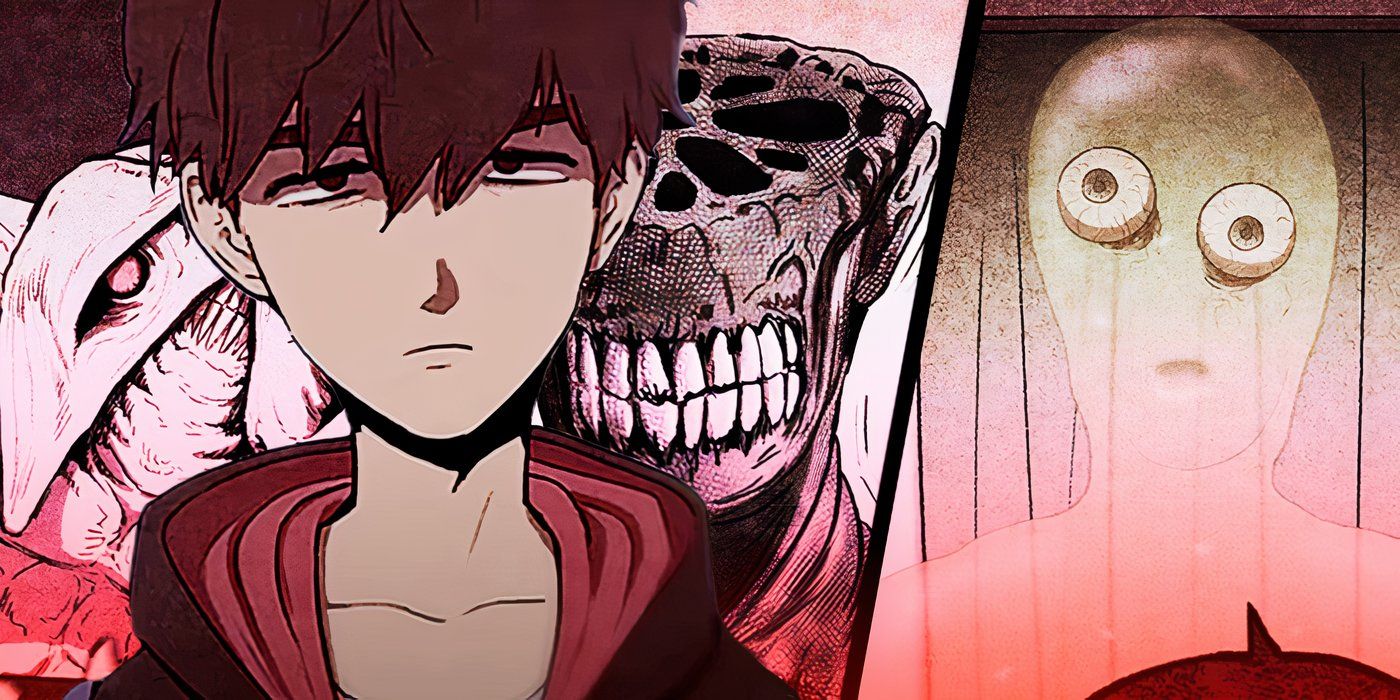
Although Netflixlive action series Sweet home began with little fanfare, its unique blend of horror and superhero elements set amidst a “monster” apocalypse quickly captured the hearts of audiences around the world – making the show one of the streaming service’s top Korean series and earning three seasons of content. With the series ending last summer, for those wanting a more intense scare and a deeper dive into the story and its characters, there’s no better way to experience Sweet home than exploring the manhwa that inspired it all.
Netflix Sweet home is based on the webtoon of the same name by Kim Carnby and Hwang Young-chan. The original series was published on Naver, a Korean Webtoon platform, from 2017 to 2020, and was later made available in English. Similar to the Netflix adaptation, the story revolves around the residents of the Green Home apartment complex as they face a monstrous apocalypse. Unlike traditional zombie narratives, in Sweet homepeople infected with the telltale virus are not turned into the undead. Instead, they transform into monstrous creatures born of their deepest fears, traumas, and regrets.
Junji Ito Would Love Sweet Home Manhwa
The series expands and deepens the Junji Ito style
While Netflix’s live-action series truly captures the essence of Sweet home manhwa, the changes made to adapt the story for television audiences not only alter the plot in some aspects, but also significantly change the overall vibe of the story. This is especially evident in the tone and atmosphere, as well as the way the characters interact in this setting. While the Netflix series emphasizes suspense, the manhwa leans more towards a horror-themed environment.
The horror in Sweet home diverges from the typical manhwa, manga or comic book. It provides a more intense and disturbing experience. It certainly echoes the style of Junji Ito, whose masterful storytelling leaves a lasting impact on readers long after the story ends. Specifically, Sweet home Expertly incorporates classic Junji Ito elements: the mysterious atmosphere of the Green Home apartments, a setting where the horrors of everyday life were already palpable, even before the monstrous apocalypse. This mix creates a haunting narrative that lingers, much like Ito’s signature works.
Furthermore, there are Sweet homeThe disturbing monster designs – once seen, not easily forgotten – draw viewers in, leaving them eager for more. There is also Hwang Young-chan’s distinctive artistic style, which effectively translates the terrifying atmosphere of a horror film onto paper, giving each panel a disturbing and frightening feel. But perhaps most crucial to the manhwa’s excellence is the psychological horror that Carnby’s story and Hwang’s art evoke in the manhwa.
While the monsters lurking in the dark hallways are scary enough, what’s even harder for readers to overcome are the residents’ inner demons—everyday fears and regrets that readers themselves can identify with—brought to life in horrific detail when a resident becomes infected. In fact, zombies have nothing to do with monsters born from a person’s twisted psyche, creatures that suddenly leap from mere figments of the imagination to living, breathing predators determined to live their best lives as monsters.
Sweet Home’s Manhwa tells a more complete story than the Netflix adaptation
Omitted subplots get time to shine in the original Manhwa
In addition to offering a more immersive experience than the Netflix series, the Sweet home manhwa offers fans several additional benefits. Firstly, readers can enjoy the full narrative, including subplots omitted or changed in the Netflix adaptation, which adds richness to the overall story. Furthermore, the manhwa allows for a deeper exploration of the characters, a crucial aspect that cannot be overstated. The story’s most compelling elements stem from the characters’ stories and experiences, often proving more terrifying than the monsters themselves. By delving deeper into these personal narratives, the manhwa creates a more nuanced and disturbing horror experience.
An excellent example of this is found in the story of protagonist Hyun Cha. An introvert, Hyun avoids social contact – even with his own family. His world is turned upside down by their tragic death in a car accident, leaving him living alone without the protection his parents and sister once provided the outside world. Things go from bad to worse when Green Home, where he and his family lived, is enveloped by the monstrous apocalypse. Paralyzed by his personal fears, Hyun is haunted not only by his inner demons, but also by the grotesque monsters that lurk outside his door.
So, while the Netflix Sweet home The series offers an interesting and compelling iteration of Carnby and Hwang’s monstrous apocalypse, fans are missing out on a more rewarding experience if they don’t explore the richer, more vibrant world the creators have built in the manhwa. Certainly, the Sweet home manhwa offers the depth and complexity that separates the best horror stories from the rest.
Sweet Home follows the story of Hyun-soo, a reclusive high school student who moves to the Green Home apartment complex after losing his family. When a mysterious epidemic turns people into monstrous creatures, Hyun-soo and the residents of Green Home must band together to survive, confronting their inner demons and terrifying external threats.
- Franchise(s)
-
Sweet home
- Creator(s)
-
Kim Seol-jin, Kim Carnby, Hwang Young-chan
